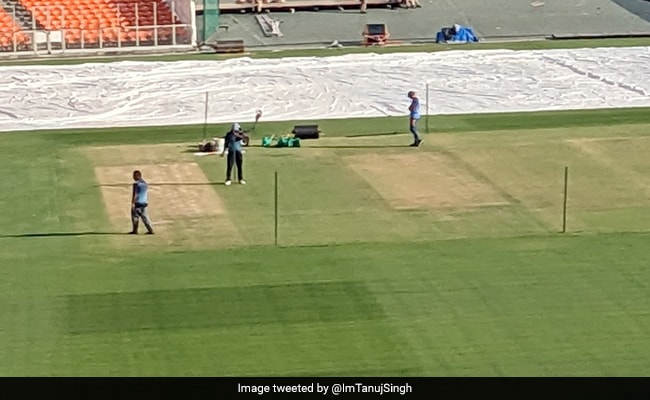
For the most part of the ongoing Border-Gavaskar Trophy, the pitches have dominated the discussions. While the first two wickets were rated ‘average’ by the International Cricket Council (ICC), the ‘poor’ rating for the Indore pitch has seen the debate over the nature of the wicket intensifying. Ahead of the 4th and final Test between India and Australia, the Narendra Modi Stadium pitch is the center of attention. But, it seems like a decision over the nature of the pitch hasn’t been made yet.
A few pictures from the stadium have emerged but the Australian camp hasn’t been able to decide its strategy for the must-win match. Though there are still a few days before the match starts, the curators have reported not received any instruction from the Indian team management or the Board of Control for Cricket in India (BCCI) about the preparation of the pitch. It seems like even the Indian camp has a ‘dilemma’ over what sort of pitch they want to be prepared.
Here are a few pictures that have emerged from the Narendra Modi Stadium:
Genuine confusion in Australian call over which pitch is being prepared at Narendra Modi Stadium pic.twitter.com/s2gzc4Z0fU
— Peter Lalor (@plalor) March 7, 2023
First look of Ahmedabad pitch for the 4th Test match between India vs Australia. pic.twitter.com/CwlcN5LOht
— CricketMAN2 (@ImTanujSingh) March 7, 2023
Seems like a call over which pitch will be used for the fourth Test has not yet been made. They are covering two strips at the moment #INDvAUS pic.twitter.com/DgX6YF9JXA
— Louis Cameron (@LouisDBCameron) March 7, 2023
“We haven’t received any instructions from the Indian team management and our local curators are preparing a normal track, as we have always done through the season,” a state association source was quoted as saying by the news agency PTI.
“Obviously, (over the) last few days the BCCI’s grounds and pitches committee instruct the local curator … but, certainly, from our end, our endeavour is to produce a good Test match pitch.”
After losing the first two Tests, Australia made a remarkable comeback in the third Test in Indore, beating India to reduce the deficit to 1-2.
It has also been reported that owing to the ‘poor’ rating of the Indore pitch, a ‘rank-turner’ is unlikely to be prepared for the 4th Test in Ahmedabad.
All three Tests of the series concluded well within the first three days. The aim is likely to not let that happen for the 4th time in a row.
Featured Video Of The Day
“Difficult Time”: Wrestlers Vinesh Phogat, Sakshi Malik On Protest Against Wrestling Body
Topics mentioned in this article

